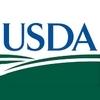Explore all the information on
Poultry egg quality
Egg quality defines those characteristics of an egg that affect consumer acceptability and preference. Components of quality include shell quality and interior egg quality for shell eggs, and interior egg quality for further processed eggs. The quality of the egg once it is laid cannot be improved. Hence, its maintenance is mostly a preventive process. Egg quality is influenced by several factors including rearing, temperature, humidity, handling, storage, and egg age. Shell quality: There are five major classes of shell defects: integrity, texture, shape, color, and cleanliness. Internal egg quality involves functional, aesthetic and microbiological properties of the egg yolk and albumen. The proportions of components for fresh egg are 32% yolk, 58% albumen and 10% shell. Regarding exterior egg quality, the shell of each egg should be smooth, clean and free of cracks. The eggs should be uniform in colour, size and shape.
Dr. Uday Patel, a PhD nutritionist with over 30 years of experience, has been consulting across South Asia and the Middle East. He observes a shift towards antibiotic-free production and highlights remarkable growth in India’s poultry industry, from 35 to 101 eggs per person over three decades. As a consultant, he emphasizes ethical practices, better FCR, improved meat quality, and sustainable growth for a brighter future....
Comments : 0
Recommendations: 2
I. INTRODUCTION Severe feather pecking (SFP) is an abnormal behaviour which reduces both hen welfare and the efficiency of egg production. While the specific causes are unknown, it is acknowledged to be multifactorial, complex and unpredictable (Rodenburg et al., 2013; Hartcher et al., 2016). The problem is compounded because the behaviour seems to spread rapidly via social learning (Zeltner et al., 2000) and is therefore difficult to control in large groups of hens. A reliable...
Comments : 0
Recommendations: 0


Broiler trial in the Netherlands confirms 2018 EFSA scientific opinion on methionine sources while validating the experimental approach
Suggested link
Flock uniformity is crucial to increase the performance and profitability of commercial egg production (Corzo et.al, 2004). Obtaining flock uniformity in a free-range system may be challenging due to the variation in feeding and ranging behaviour of individual birds. The current study investigated the effect of body weight on initial range utilization and flock uniformity in two free-range laying flocks. A total of 6,250 Lohmann Brown hens were weighed and assigned to 2 identical...
Comments : 0
Recommendations: 0
1. Introduction Respiratory diseases control is crucial in all types of poultry including laying hens. Respiratory infections in layers can considerably impair bird health and welfare, as well as performance and hence profitability of flocks [1]. Although in broilers respiratory diseases mostly affect the respiratory tract itself, in layers respiratory infections affect both the airways and the oviduct [2]. Therefore, respiratory disease can have a significant economic...
Comments : 0
Recommendations: 0
Suresh Chitturi (Managing Director, Srinivasa Farms) comments on India’s main strengths, consumer trends, and the evolution of poultry operations in the country, during this Engormix interview....
Comments : 0
Recommendations: 3
Poultry industry experts at the 2025 Latin American Poultry Summit will present information on factors that affect the efficient marketing of poultry farming. The program is organized into five sessions – grain management, food safety, genetics, breeding and health – and will take place on Monday,...
Comments : 0
Recommendations: 0
1. Introduction Gut microbiota, represented by bacteria, archaea, viruses, and eukaryotes, take part in regulating several functions in both humans and animals [1]. It has been estimated that the chicken gut can be colonized by at least 1000 different microbial strains that are involved in maintaining the intestinal health of hens while sustaining productivity and growth [2,3]. This microbiota takes part in various metabolic pathways related to nutrient digestion and absorption,...
Comments : 0
Recommendations: 2
1. Introduction The increase in food demand driven by population growth, coupled with the reduction in the supply of raw materials owing to factors such as climate change, poses a significant challenge for the agricultural and livestock sectors. Among the different processes associated with egg production, the feeding of hens represents the largest source of environmental impact [1]. Nonetheless, the revaluation of agrifood by-products through their incorporation into animal diets...
Comments : 0
Recommendations: 0
The 2022–2023 highly pathogenic avian influenza (HPAI) H5N1 outbreak in the United States (U.S.) is the most geographically extensive and costly animal health event in U.S. history. In 2022 alone, over 57 million commercial and backyard poultry in 47 U.S. states were affected. Over 75% of the affected poultry were part of the commercial table egg production sector. Methods: We conducted a case–control study to identify potential risk factors for the introduction of the HPAI virus...
Comments : 0
Recommendations: 0
In this interview, Carlos de la Cruz, Global Consultant Expert at Evonik, discusses the critical challenges faced by the egg industry in providing optimal nutrition for laying hens. He highlights issues such as shortage of protein sources and the importance of balanced diets. Carlos also shares successful...
Comments : 0
Recommendations: 4


Oxidative stress in animal production: how is it generated and how can we reduce it?
Suggested link
INTRODUCTION The initial stage of a laying hen's life is crucial for its development. During this period, optimal nutrition is essential for ensuring strong performance and high egg quality throughout the hen's productive lifespan (Rentsch et al., 2023). During this phase, young laying hens undergo significant physiological changes, including the development of reproductive organs and the initiation of egg production. Adequate nutrition during this period is crucial for...
Comments : 0
Recommendations: 1
The demand for functional foods has surged in recent decades and is projected to continue growing due to their potential to mitigate the risk of certain diseases. Eggs, recognized for their excellent nutritional value and health benefits, fall into this category. The widespread production and consumption...
Comments : 0
Recommendations: 1
The WVEPAH training program is designed for veterinarians and poultry professionals who wish to consolidate and refine their knowledge in areas such as pathology, nutrition, biosecurity, and epidemiology, among others. We are pleased to announce our upcoming course:
Module II: Commercial Layers at the prestigious Universidad Nacional...
Comments : 0
Recommendations: 2
Rick Kleyn (Consultant at Spesfeed) talks about egg size, quality, and protein levels in the diet, in this Engormix interview....
Comments : 0
Recommendations: 2
I. INTRODUCTION The inclusion of alternative ingredients such as rice bran, DDGs and sunflower meal in layer diets, to reduce feed cost, can result in higher phytate levels, potentially limiting availability of minerals, protein and energy, all of which are important to maintain egg production, eggshell strength and bone strength (Bello and Korver, 2019). Phytase enzymes are commonly used in the animal feed industry primarily to increase phosphorus (P) availability from plant...
Comments : 0
Recommendations: 0
...
Comments : 0
Recommendations: 0
In recent years, the egg industry is aiming to prolong the life cycle of laying hens, both for reasons of profitability and for sustainability. However, the goal to produce 500 eggs in a 100-week cycle is hindered by the declining performance of older hens. It is hypothesised that nutritional strategies can be implemented to support the health of these animals, thereby improving laying persistency. The objective of this trial was to investigate the effects of two sources of butyrate...
Comments : 0
Recommendations: 0
The Australian Egg Industry has identified opportunities to optimise production performance, health, flock consistency and egg quality through best practice. Using a cross-sectional survey design for 3 stakeholder groups (farm staff, managers, and consultants), we assessed current knowledge, attitudes, practices, barriers and enablers of adoption of best practices in poultry welfare, health, biosecurity and production performance. Of the 61 manager surveys posted, 27 were returned; of...
Comments : 0
Recommendations: 0


Broiler trial in the Netherlands confirms 2018 EFSA scientific opinion on methionine sources while validating the experimental approach
Suggested link
Steve Leeson (Professor Emeritus, University of Guelph) comments on the use of amino acids in broiler nutrition and the performance of low energy diets, in this Engormix interview....
Comments : 0
Recommendations: 4
I. INTRODUCTION Phytogenic products are used as an antibiotic alternative, with other alternatives like prebiotics, probiotics, organic acids and other products with antimicrobial properties. The ability of phytogens to reduce the load of significant pathogens such as Clostridium (2020), Escherichia (Zou et al., 2016), and Salmonella (Abudabos et al., 2016), and improve the health and performance of chickens makes them increasingly popular. Phytogens also improve critical layer...
Comments : 0
Recommendations: 0





.jpg&w=3840&q=75)

























